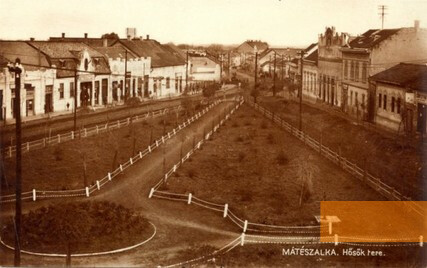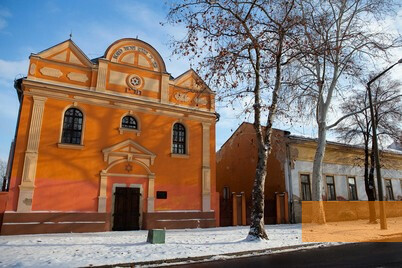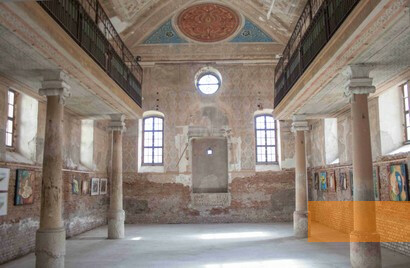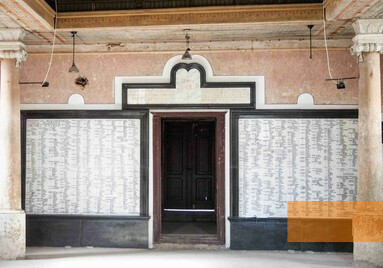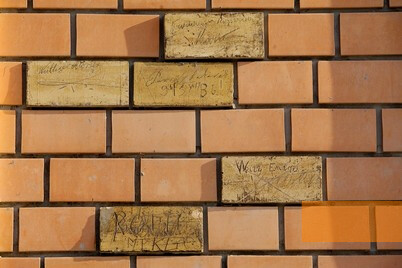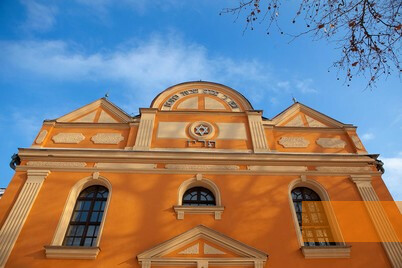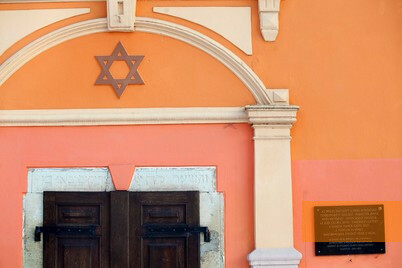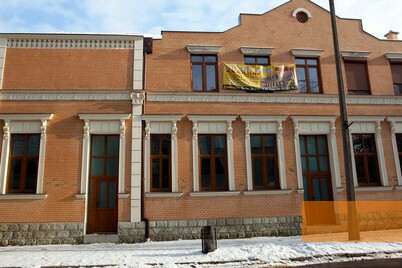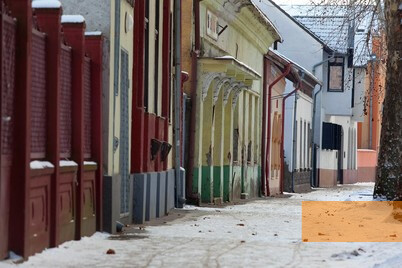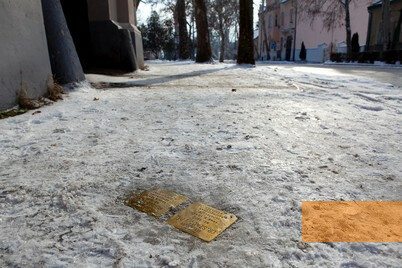In the eastern Hungarian town of Mátészalka, it is above all the building of the Orthodox synagogue that stands as a reminder of the Jewish past of the town, where in 1944 a large ghetto existed.
Mátészalka is a town in north-eastern Hungary near the Slovak, Ukrainian and Romanian borders. Situated in the north of the Hungarian lowlands, the settlement was characterized by agriculture since the Middle Ages. The first Jewish inhabitants moved to Mátészalka at the end of the 18th century, when anti-Jewish violence broke out in many areas of Eastern Europe. From 1867 onwards, Jews in Hungary had equal status and new paths of social advancement opened up for them. In Mátészalka, too, Jews played a major role in the modernization of the town, but most Jews here - unlike many Jews in Budapest, for example - remained faithful to the religious and cultural traditions of Orthodox Judaism. In 1941, 1,555 Jews lived in Mátészalka, equating to 15 per cent of the total population.
In 1942 Jewish men were called on to conduct forced labour by the Hungarian army, many of them did not survive. After the occupation of Hungary by the German Wehrmacht on March 19, 1944, the situation of the Jews in Mátészalka deteriorated drastically. From April 5, they had to wear a »Yellow Star«. A few days later the Hungarian authorities set up a ghetto in Mátészalka, to which all Jews from Mátészalka and the surrounding area had to move step by step. Thousands of Jews from other places, for example from Transcarpathia were also deported here, so that at times more than 16,000 Jewish children, women and men had to live in a very confined space. The living conditions were catastrophic, 54 people died. Hungarian Constables tortured Jews in the synagogue in order to obtain clues to hidden valuables. Many women and girls were raped. The Jews from the Mátészalka ghetto were deported to the Auschwitz-Birkenau extermination camp in a total of five transports between May 19 and June 5, 1944. Most of them were murdered there in gas chambers immediately upon their arrival.
In 1942 Jewish men were called on to conduct forced labour by the Hungarian army, many of them did not survive. After the occupation of Hungary by the German Wehrmacht on March 19, 1944, the situation of the Jews in Mátészalka deteriorated drastically. From April 5, they had to wear a »Yellow Star«. A few days later the Hungarian authorities set up a ghetto in Mátészalka, to which all Jews from Mátészalka and the surrounding area had to move step by step. Thousands of Jews from other places, for example from Transcarpathia were also deported here, so that at times more than 16,000 Jewish children, women and men had to live in a very confined space. The living conditions were catastrophic, 54 people died. Hungarian Constables tortured Jews in the synagogue in order to obtain clues to hidden valuables. Many women and girls were raped. The Jews from the Mátészalka ghetto were deported to the Auschwitz-Birkenau extermination camp in a total of five transports between May 19 and June 5, 1944. Most of them were murdered there in gas chambers immediately upon their arrival.
With the first deportation transport, which left Mátészalka on May 19, 1944, 3,299 Jews were deported to Auschwitz-Birkenau. On May 22, 3,298 Jews from Transcarpathia were deported from Mátészalka. In one transport a week later there were 3,299 Jews, almost all of them from Mátészalka and its surroundings. On May 31, another train with 3,299 Jews from the surrounding area followed. The last transport on June 5 deported the 3,100 Jews still remaining in the ghetto. A total of more than 16,000 Jewish children, women and men were deported from Mátészalka. After the end of the war less than 150 returned.
After the war only about 150 Jews returned to Mátészalka. Since they rarely felt welcome and often found that their houses were in the hands of non-Jews, many of them soon emigrated again. In parts of the population, anti-Semitism continued to smoulder after the war. As the Communist dictatorship, in power since 1948, was generally associated with Jews by many people, anti-Semitic incidents occurred in Mátészalka during the Hungarian uprising of 1956. As a result, the number of Jews in the region fell sharply once again.
The Orthodox synagogue, built in 1857, is the main reminder of the once significant Jewish population of Mátészalka. It was renovated in the 1980s and is in a mediocre condition. It is occasionally used for exhibitions. Shortly after the war, a memorial plaque with 1,700 names of murdered Jews from Mátészalka and its surroundings was placed inside the synagogue. In 2004 a plaque was inaugurated on the outer façade of the synagogue in memory of the deported and murdered Jews of the ghetto. This was replaced around 2016 by a plaque commemorating two of the city's Jewish sons, Hollywood greats Adolph Zukor (1873–1976) and Tony Curtis (1925–2010). Especially the private visits by the actor Tony Curtis brought more attention to the Jewish history of the city. Curtis himself had already been born in the USA shortly after his parents emigrated from Mátészalka.
Nowadays many houses on the territory of the former ghetto are shining in a new light. When renovating the façades of some houses, care was taken to preserve and make visible graffiti from the time of the ghetto in spring 1944.
In June 2007 the German artist Gunter Demnig laid Stolpersteine (tripping stones) in Mátészalka. They are meant to commemorate individual victims of the Holocaust in front of the houses where they lived.
The Orthodox synagogue, built in 1857, is the main reminder of the once significant Jewish population of Mátészalka. It was renovated in the 1980s and is in a mediocre condition. It is occasionally used for exhibitions. Shortly after the war, a memorial plaque with 1,700 names of murdered Jews from Mátészalka and its surroundings was placed inside the synagogue. In 2004 a plaque was inaugurated on the outer façade of the synagogue in memory of the deported and murdered Jews of the ghetto. This was replaced around 2016 by a plaque commemorating two of the city's Jewish sons, Hollywood greats Adolph Zukor (1873–1976) and Tony Curtis (1925–2010). Especially the private visits by the actor Tony Curtis brought more attention to the Jewish history of the city. Curtis himself had already been born in the USA shortly after his parents emigrated from Mátészalka.
Nowadays many houses on the territory of the former ghetto are shining in a new light. When renovating the façades of some houses, care was taken to preserve and make visible graffiti from the time of the ghetto in spring 1944.
In June 2007 the German artist Gunter Demnig laid Stolpersteine (tripping stones) in Mátészalka. They are meant to commemorate individual victims of the Holocaust in front of the houses where they lived.
- Name
- A mátészalkai gettó emlékezete
- Address
-
Kossuth u. 40
4700 Mátészalka


